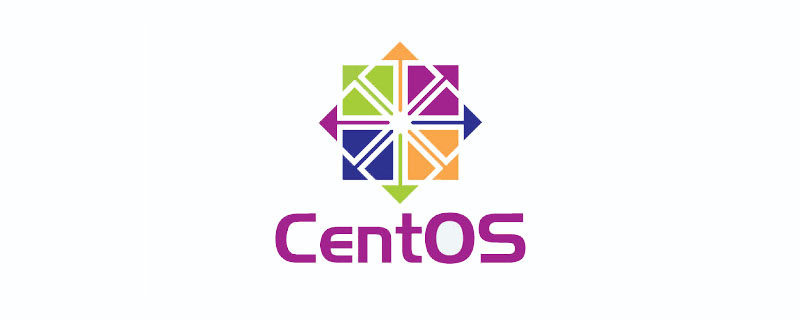How to install php on centos7 yum
centos7 yum installation method of php: First install and enable EPEL and Remi repositories on the CentOS7 system; then install "yum-utils"; then use the "yum -y install php" command to install PHP and all necessary module; finally start "fpm".

Recommended: "PHP Video Tutorial" "centos Tutorial"
in CentOS 7 The official software repository for PHP 5.4 has reached end of life and is no longer actively maintained by the developers.
To stay up to date with the latest features and security updates, you need to use a newer (possibly the latest) PHP version on your CentOS 7 system.
Install PHP 7 on CentOS 7
Installation necessary
yum -y install gcc gcc-c++
1. To install PHP 7, you must use the following command on CentOS 7 system Install and enable EPEL and Remi repositories.
#yum install https://dl.fedoraproject.org/pub/epel/epel-release-latest-7.noarch.rpm #yum install http://rpms.remirepo.net/enterprise/remi-release-7.rpm
2. Next, you need to install yum-utils, which is a set of useful programs for managing yum repositories and packages. It has tools that basically extend yum's default functionality.
It can be used to manage (enable or disable) yum repositories as well as packages without any manual configuration and so on.
#yum -y install yum-utils
3. One of the programs provided by yum-utils is yum-config-manager, you can use it to enable Remi repository as the default repository for installing different PHP versions, as shown in the figure.
#yum-config-manager --enable remi-php71 [ 安装PHP 7.1 ] #yum-config-manager --enable remi-php72 [ 安装PHP 7.2 ] #yum-config-manager --enable remi-php73 [ 安装PHP 7.3 ]
4. Now use the following command to install PHP 7 along with all required modules.
#yum -y install php php-mcrypt php-devel php-cli php-gd php-pear php-curl php-fpm php-mysql php-ldap php-zip php-fileinfo
5. Check the php version
[root@VM_159_140_centos lnmp]# php -v PHP 7.1.28 (cli) (built: Apr 2 2019 17:49:56) ( NTS ) Copyright (c) 1997-2018 The PHP Group Zend Engine v3.1.0, Copyright (c) 1998-2018 Zend Technologies
6. Start php-fpm
systemctl start php-fpm
Enable startup
systemctl enable php-fpm.service
View the php.ini file location
[root@VM_159_140_centos ~]# php -ini phpinfo() PHP Version => 7.1.28 System => Linux VM_159_140_centos 3.10.0-514.26.2.el7.x86_64 #1 SMP Tue Jul 4 15:04:05 UTC 2017 x86_64 Build Date => Apr 2 2019 17:49:32 Server API => Command Line Interface Virtual Directory Support => disabled Configuration File (php.ini) Path => /etc Loaded Configuration File => /etc/php.ini Scan this dir for additional .ini files => /etc/php.d Additional .ini files parsed => /etc/php.d/20-bz2.ini, /etc/php.d/20-calendar.ini, /etc/php.d/20-ctype.ini, /etc/php.d/20-curl.ini, /etc/php.d/20-dom.ini, /etc/php.d/20-exif.ini, /etc/php.d/20-fileinfo.ini, /etc/php.d/20-ftp.ini, /etc/php.d/20-gd.ini, /etc/php.d/20-gettext.ini, /etc/php.d/20-iconv.ini, /etc/php.d/20-json.ini, /etc/php.d/20-ldap.ini, /etc/php.d/20-mcrypt.ini, /etc/php.d/20-mysqlnd.ini, /etc/php.d/20-pdo.ini, /etc/php.d/20-phar.ini, /etc/php.d/20-posix.ini, /etc/php.d/20-redis.ini, /etc/php.d/20-shmop.ini, /etc/php.d/20-simplexml.ini, /etc/php.d/20-sockets.ini, /etc/php.d/20-sqlite3.ini, /etc/php.d/20-sysvmsg.ini, /etc/php.d/20-sysvsem.ini, /etc/php.d/20-sysvshm.ini, /etc/php.d/20-tokenizer.ini, /etc/php.d/20-xml.ini, /etc/php.d/20-xmlwriter.ini, /etc/php.d/20-xsl.ini, /etc/php.d/30-mysqli.ini, /etc/php.d/30-pdo_mysql.ini, /etc/php.d/30-pdo_sqlite.ini, /etc/php.d/30-wddx.ini, /etc/php.d/30-xmlreader.ini, /etc/php.d/40-zip.ini, /etc/php.d/50-swoole.ini
pecl installation extension preparation
[root@VM_159_140_centos default]# yum -y install php-pear [root@VM_159_140_centos default]# pecl Commands: build Build an Extension From C Source bundle Unpacks a Pecl Package channel-add Add a Channel channel-alias Specify an alias to a channel name channel-delete Remove a Channel From the List
................................ ............
pecl install redis
[root@VM_159_140_centos www]# pecl install redis You should add "extension=redis.so" to php.ini [root@VM_159_140_centos www]# echo "extension=redis.so;" >> /etc/php.d/20-redis.ini
Error
checking for igbinary includes... configure: error: Cannot find igbinary.h [root@VM_159_140_centos www]# pecl install igbinary You should add "extension=igbinary.so" to php.ini [root@VM_159_140_centos www]# echo "extension=igbinary.so;" >> /etc/php.d/20-redis.ini
The above is the detailed content of How to install php on centos7 yum. For more information, please follow other related articles on the PHP Chinese website!

Hot AI Tools

Undresser.AI Undress
AI-powered app for creating realistic nude photos

AI Clothes Remover
Online AI tool for removing clothes from photos.

Undress AI Tool
Undress images for free

Clothoff.io
AI clothes remover

AI Hentai Generator
Generate AI Hentai for free.

Hot Article

Hot Tools

Notepad++7.3.1
Easy-to-use and free code editor

SublimeText3 Chinese version
Chinese version, very easy to use

Zend Studio 13.0.1
Powerful PHP integrated development environment

Dreamweaver CS6
Visual web development tools

SublimeText3 Mac version
God-level code editing software (SublimeText3)

Hot Topics
 CakePHP Project Configuration
Sep 10, 2024 pm 05:25 PM
CakePHP Project Configuration
Sep 10, 2024 pm 05:25 PM
In this chapter, we will understand the Environment Variables, General Configuration, Database Configuration and Email Configuration in CakePHP.
 PHP 8.4 Installation and Upgrade guide for Ubuntu and Debian
Dec 24, 2024 pm 04:42 PM
PHP 8.4 Installation and Upgrade guide for Ubuntu and Debian
Dec 24, 2024 pm 04:42 PM
PHP 8.4 brings several new features, security improvements, and performance improvements with healthy amounts of feature deprecations and removals. This guide explains how to install PHP 8.4 or upgrade to PHP 8.4 on Ubuntu, Debian, or their derivati
 CakePHP Date and Time
Sep 10, 2024 pm 05:27 PM
CakePHP Date and Time
Sep 10, 2024 pm 05:27 PM
To work with date and time in cakephp4, we are going to make use of the available FrozenTime class.
 CakePHP File upload
Sep 10, 2024 pm 05:27 PM
CakePHP File upload
Sep 10, 2024 pm 05:27 PM
To work on file upload we are going to use the form helper. Here, is an example for file upload.
 CakePHP Routing
Sep 10, 2024 pm 05:25 PM
CakePHP Routing
Sep 10, 2024 pm 05:25 PM
In this chapter, we are going to learn the following topics related to routing ?
 Discuss CakePHP
Sep 10, 2024 pm 05:28 PM
Discuss CakePHP
Sep 10, 2024 pm 05:28 PM
CakePHP is an open-source framework for PHP. It is intended to make developing, deploying and maintaining applications much easier. CakePHP is based on a MVC-like architecture that is both powerful and easy to grasp. Models, Views, and Controllers gu
 CakePHP Creating Validators
Sep 10, 2024 pm 05:26 PM
CakePHP Creating Validators
Sep 10, 2024 pm 05:26 PM
Validator can be created by adding the following two lines in the controller.
 CakePHP Working with Database
Sep 10, 2024 pm 05:25 PM
CakePHP Working with Database
Sep 10, 2024 pm 05:25 PM
Working with database in CakePHP is very easy. We will understand the CRUD (Create, Read, Update, Delete) operations in this chapter.






